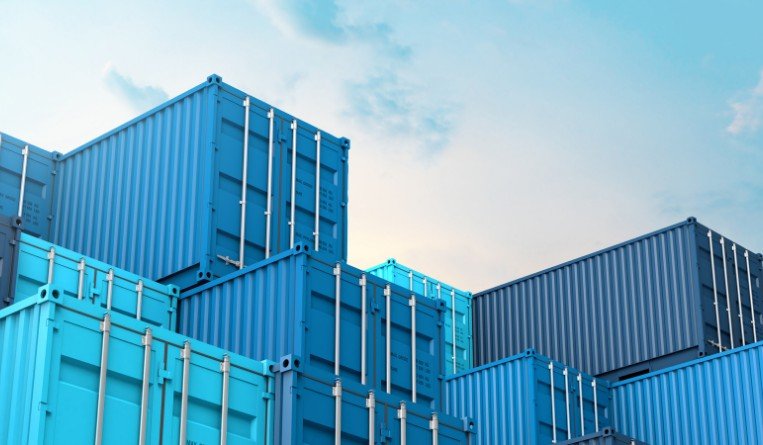India is keen to strengthen its presence in the Indian Ocean by building ports in the region. The move is driven to boost the country’s maritime trade but also because of security concerns, given India’s unease over China’s growing influence in South Asia through its ambitious Belt-and-Road Initiative (BRI) projects.
Sri Lanka’s Colombo Port is viewed as a strategic point for India’s emphasis on trade and security. India’s bid to get involved in the Colombo port’s development was under a cloud of uncertainty, given the Sri Lankan government’s initial flip-flops in assigning India to develop the port’s Eastern Cargo Terminal (ECT). India and Japan had originally made a bid for the ECT’s development but both came up against a wall of opposition from trade unions who protested against foreign participation in the ECT project, prompting Sri Lanka to back out from the 2019 agreement with India and Japan to develop and operate the ECT.
However, after scrapping the ECT project with the two countries, Sri Lanka’s government announced weeks later, on March 2, 2021, that it would allow them, instead, to develop the West Container Terminal (WCT).
Sri Lanka’s official spokesman Keheliya Rambukwella said the cabinet had approved the public-private project on build, operate and transfer (BOT) basis for 35 years, with the Sri Lanka Port Authority and companies selected by the governments of India and Japan.
India has retained Adani ports, which had also been selected to invest in the EST.
Rambukwella disclosed that Sri Lanka would also allow foreign participation in the WCT because the huge investment needed it.
While commerce is the key driver behind India’s interest in the Colombo port, which is a major gateway for re-exports, another factor is India’s interest in strengthening its presence in this strategically important region of the Indian Ocean; India is trying to counter China’s growing economic and political influence in Sri Lanka, whose strategic importance can hardly be overstated because of China’s BRI creating a multi-billion dollar global infrastructure, though all on loan basis, encompassing the construction of a seaport, an airport, port city, highways and power stations. China operates the Colombo International Container Terminal as a joint venture with the port authority.
Critics warn that the Chinese loans will pose a long-term huge burden on Sri Lanka, which will not be able to repay. After all, Sri Lanka in 2017 had to lease the China-constructed Hambantota port to a Chinese company for 99 years to pay off the debts piled up from Chinese loans for that port’s construction.
Japan and India are members of Quad, a group of four Indo-Pacific nations, including the U.S. and Australia, that is seeking to counter Chinese influence in the region.
Indian port developer/operator Adani Ports and Special Economic Zones Ltd. (APSEZ), along with John Keells Holdings and the Sri Lanka Port Authority (SLPA), will jointly develop the WCT on a build-operate-transfer (BOT) basis for a period of 35 years as a public-private partnership. WCT will have a quay length of 1,400 metres and alongside depth of 20 metres, thus making it a prime transhipment cargo destination to handle the ultra-large container carriers (ULCCs).
The project costs of the WCT are around US$750 million, though this figure could rise in the future.
APSEZ announced on March 15, 2021, that it had received a letter of intent from the Sri Lankan Ministry of Ports and Shipping and SLPA for the development and operation of the WCT at Colombo Port.
The project is expected to boost WCT’s container handling capacity and further consolidate Sri Lanka’s locational advantage as one of the world’s top strategic nodes along the busiest global transhipment route.
The Colombo Port is already the preferred regional hub for transhipment of Indian containers and mainline ship operators, with 45% of Colombo Port’s transhipment volumes either originating from or destined to an Adani port terminal in India. India was particularly interested in the ECT because over 70% of the transhipment business at this terminal is linked to India.
The impact of this partnership, in sheer network terms, is significant and expected to be of mutual advantage emanating from the string of seven container terminals across its 12 ports that Adani operates along the Indian coastline handling an annual volume of over 6 million TEUs.
This partnership will multiply and accelerate the transhipment options that will become available to serve various shipping lines and other potential port customers across the South Asian waters, benefiting both India and Sri Lanka in multiple ways.
Commenting on the Colombo Port WCT project, Karan Adani, the Ahmedabad-based CEO of APSEZ, recently stated that any port partnership is a “validation of the mutual trust between two nations and in this context the WCT partnership is significant on several fronts.”
India’s approach to the Colombo port project is one of caution. India’s external affairs ministry spokesman Anurag Srivastava told journalists: “What I can tell you generally is that we have conveyed an interest in participation in the Colombo port. Our interest is a long-standing one and this is because of the fact that most goods handled there are from and to India. We had in principle agreement from the Sri Lankan government in this regard. The current government has, however, expressed a preference in engaging investors directly and I understand discussions are going on in this regard.”
Sri Lankan Foreign Secretary Jayanath Colombage has been saying that the WCT offer should be seen as a sign that his government “was willing to make a compromise,” despite what he called President Gotabaya Rajapaksa’s “pledge to safeguard national assets.” Sri Lanka has also offered India and Japan a much larger stake in the WCT (85%), on par with what China has been given for another terminal, than it was willing to give in the ECT (49%), he pointed out.
Manik Mehta



